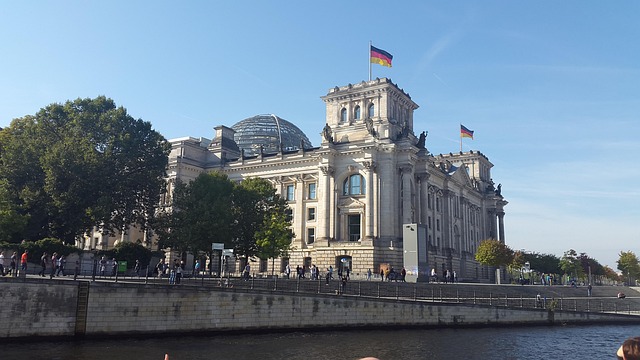
The Connection Between Subsidising Sports and Community Wellbeing
In an increasingly complex world, the notion of community wellbeing is gaining traction among policymakers, urban planners, and social scientists. One often overlooked yet impactful element in enhancing community wellbeing is the investment in sports. The connection between subsidising sports and promoting community wellbeing is multifaceted, intertwining physical health, mental health, social cohesion, and economic viability. This article explores these dimensions in depth, elucidating how governments and private entities can foster healthier and more cohesive communities through sports subsidies.
The Role of Physical Health in Community Wellbeing
Physical health is a foundational aspect of community wellbeing. Regular participation in sports significantly contributes to lower rates of obesity, cardiovascular diseases, and mental health issues like anxiety and depression. When communities invest in sports programs and facilities, they provide residents with the opportunities they need for physical activity. Sports subsidies can enable municipalities to offer free or low-cost access to sports facilities, coaching, and equipment, thus breaking down financial barriers that may prevent individuals from participating.
Economic Implications of Healthier Communities
Healthier individuals lead to reduced healthcare costs, which in turn benefits the entire community. For instance, when people engage in regular physical activities, they are less likely to seek medical attention for preventable diseases. This reduction in demand for medical services can save local governments and taxpayers substantial amounts of money, funds that can be redirected toward other essential community services such as education or public transportation.
The Mental Health Aspect
Mental health is another critical component of community wellbeing, and sports can act as a powerful remedy for various mental health issues. Engaging in sports fosters the release of endorphins, commonly known as ‘feel-good’ hormones, which elevate mood and reduce feelings of stress and anxiety. Furthermore, sports can provide individuals with a constructive outlet for their emotions, thereby aiding in mental stability.
Building Resilience Through Sports
Participating in sports cultivates resilience, teamwork, and discipline. These qualities are not only essential for personal success but also contribute to communal harmony. When individuals engage in team sports, they learn how to cooperate, resolve conflicts, and support one another—essential skills for any community aiming for collective wellbeing. Sports subsidies can encourage participation across a broader demographic, enhancing communal resilience and mental wellness.
Strengthening Social Cohesion
Social cohesion is a vital indicator of community health. Sports can act as a unifying force that bridges differences in age, gender, economic background, and ethnicity. Community sports programs create environments where people can come together for common goals, thus fostering friendships and alliances beyond the playing field. When local governments subsidise sports programs, they not only support athletics but also build social networks that enrich community life.
Creating Inclusive Opportunities
Subsidised sports programs can focus on inclusivity, ensuring that marginalized groups—such as people with disabilities or individuals from low-income families—have equal access to sports activities. This inclusivity can counteract feelings of isolation and disenfranchisement, thus strengthening the social fabric of the community. When all community members can participate, everyone stands to benefit from enhanced social bonds, which makes for a healthier and more united community.
Economic Viability and Community Growth
Investing in sports through subsidies also has significant economic implications. Facilities and programs related to sports not only promote health and wellbeing but also generate economic activity. Sports events can attract tourists and increase business for local vendors. Furthermore, the improved physical and mental health of community members translates to a more productive workforce. A well-supported sports system can improve job creation, skill development, and overall economic resilience.
Sporting Events as Economic Catalysts
Hosting sporting events—be they local tournaments or larger competitions—can serve as a catalyst for economic growth. The influx of visitors associated with these events boosts local economies through increased spending on hotels, food, and retail. Community venues also benefit from the exposure they receive by hosting such events, which can drive up usage rates for other local activities and facilities.
Financial Considerations of Sports Subsidies
The question often arises—how should subsidies for sports be funded? Governments can allocate these funds through various means, such as reallocating existing budgets, utilizing tax income, or leveraging grants from both public and private sectors. The financial commitment to sports should not be viewed as a burden but rather as a wise investment in the overall health, safety, and productivity of the community. Consideration must be given to the long-term benefits that communities will reap from these investments.
Case Studies: Success Stories
Examining case studies from around the world provides real-world evidence of the benefits of subsidising sports. Various cities and municipalities have seen remarkable improvements in quality of life, health, and economic stability through targeted investments in sports programs and infrastructures.
The Example of Melbourne, Australia
Melbourne offers a compelling case study on how the city’s investment in community sports has significantly boosted both physical health and social engagement. Through its subsidised community sports programs, Melbourne has seen broadened access to sports for all demographics. The result has been not only improved health outcomes but also a more socially cohesive community.
Scandinavia’s Sports Funding Model
Scandinavian countries like Sweden and Norway have long embraced a model of sports funding from local governments. They have seen vast improvements in public health metrics and community cohesion as a direct result of promoting sports activities at all levels. These investments are reflected in high participation rates in various sports, from team sports to recreational activities. Residents report higher satisfaction levels, correlating with boosted mental health and community identity.
Challenges and Considerations
While the benefits of subsidising sports are numerous, there are challenges and considerations to keep in mind. One major concern is ensuring that funds are used effectively and reach the communities that need them the most. Transparency in the allocation and management of sports subsidies is crucial to ensure accountability. Moreover, addressing the quality and maintenance of facilities is essential to encourage sustained participation and safety.
The Risk of Inequality
Another challenge lies in the potential for inequality in access. Not all neighborhoods may benefit equally from subsidised sports initiatives, especially in larger urban areas where socioeconomic disparities can be stark. Policymakers need to take proactive measures to ensure that all communities receive adequate sports services and facilities. This means focusing on inclusion and accessibility, so that everyone—regardless of background—can reap the benefits of sports.
Conclusion
The connection between subsidising sports and community wellbeing is profound and undeniable. Investing in sports leads to improved physical and mental health, social cohesion, and a stronger economy. As communities seek to bolster their wellbeing and resilience, the subsidisation of sports presents a compelling avenue to achieving these goals. Policymakers, stakeholders, and community members alike must recognise the intrinsic value of sports as a vital contributor to the overall health and happiness of society.
By prioritising sports activities and their funding, communities can flourish, fostering not only healthier citizens but also a tightly knit community fabric that withstands the tests of time and adversity. As we move into the future, understanding and nurturing this connection will be pivotal for creating vibrant, engaged, and thriving communities across the globe.



